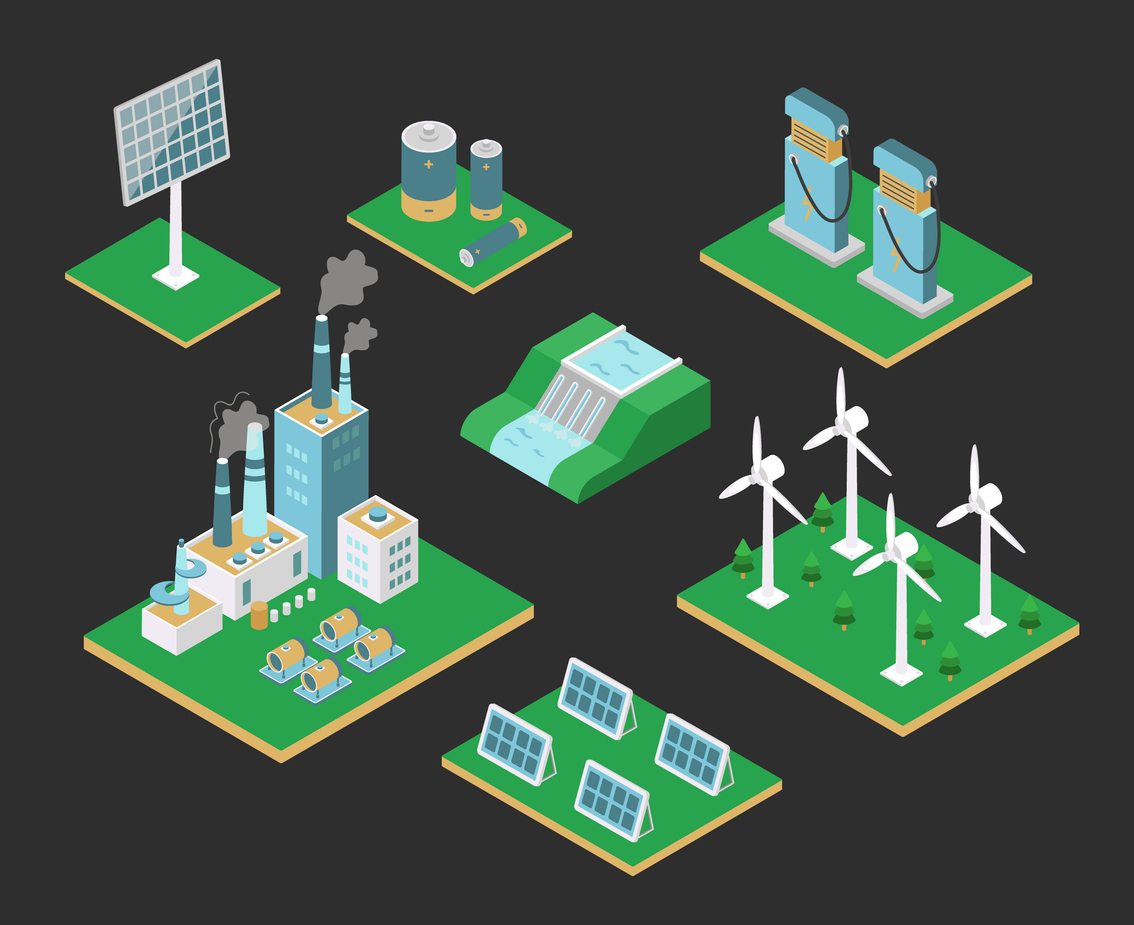The shift toward renewable energy is picking up steam in the United States. Government officials aim to reach 80% renewable energy production by 2030 and 100% carbon-free electricity by 2035. It’s an ambitious goal, considering the vast majority of households still use fossil fuels to power their homes and vehicles. However, Americans are becoming more aware of the many benefits of renewable energy and are steadily making the shift. Indeed, 69% of U.S. adults want continued development of alternative energy sources over expanding oil, coal, and natural gas production. As a result, power generated by alternative energy sources is setting records in the U.S., with nearly a quarter of electricity demand coming from solar, wind, and hydro, among other sources.
Top 3 Alternative Energy Sources in the U.S.
Let’s examine the three most popular alternative energy sources and their impact on America’s power supply.
1. Wind Energy
Wind energy is abundant and inexhaustible. It’s generated by converting the wind’s kinetic energy into electricity using wind turbines. The turbines have large 200-foot blades that rotate when wind flows over them, driving a generator that produces electrical power.
Pros:
- Wind energy is clean; it produces no emissions.
- Wind energy can be economical, especially in regions with consistent wind patterns.
- Wind turbines can coexist with agricultural activities, providing an additional income source for farmers and ranchers. The turbines can also be erected offshore in the ocean.
Cons:
- Wind turbines can be noisy, and their presence can alter the landscape.
- Onshore wind turbines can pose a risk to birds and other wildlife. Meanwhile, offshore turbines can affect the behavior and habitat of marine animals.
- The efficiency of wind energy production is directly linked to wind speed and availability, which can be variable.
Why It’s a Good Alternative: Wind energy is an efficient and scalable way to generate electricity, especially in places with lots of wind. Modern turbine technology advancements have spurred efficiency and cost reduction improvements, making wind energy a competitive alternative energy source. Moreover, the ability to set up wind farms on existing land, like farms and ranches, makes them even more appealing and practical. Energy companies are also building floating offshore wind farms that don’t disrupt the sea bed and have minimal impact on aquatic species.
In 2022, wind turbines lead all other renewable energy sources, generating just over 10% of the country’s net total energy.
2. Hydropower
Hydropower is energy that comes from flowing or falling water. It’s harnessed through dams and river-based systems where water flows through turbines, spinning them to generate electricity. The U.S. has over 90,000 dams and about 2,300 produce power as of 2020.
Pros:
- Hydropower provides a stable supply of electricity unaffected by weather conditions.

- Hydropower plants can store water in reservoirs, allowing for energy production on demand.
- Hydropower electric power plants last up to ten times longer than coal and nuclear plants, produce much fewer greenhouse gas emissions than fossil fuels, and generate zero waste.
Cons:
- Constructing and operating hydropower plants can disrupt local ecosystems and fish populations.
- Building dams and other hydropower infrastructure requires significant investment.
- Large-scale hydropower projects can lead to the relocation of communities living in affected areas.
Why It’s a Good Alternative: Despite its drawbacks, hydropower remains a stable and reliable alternative energy source, particularly in regions with abundant water resources. Its ability to provide consistent power and store energy for future use makes it a crucial component of a diversified and sustainable energy strategy. However, hydropower benefits go beyond electricity generation, providing irrigation support, flood control, and clean drinking water. The sector also employs about 66,500 Americans and is expected to grow over the next few decades.
In 2022, hydropower plants generated 6.2% of the total utility-scale electricity in the U.S.
3. Solar Energy
The sun shines brightly most days in every region of the U.S., providing clean, renewable energy. Visit just about any suburb, and you’ll spot Photovoltaic (PV) solar panels installed on rooftops. Many municipalities are also investing in solar panels, setting up large solar plants to power public infrastructure.
Pros:
- The sun’s power supply is endless.
- Solar panels have a relatively low operational and maintenance cost once installed.
- Solar energy can drastically lower or eliminate electricity costs for homes and businesses.
Cons:
- The upfront expense for solar panels and installation can be substantial—the typical residential installation cost around $25,000.
- Solar panel efficiency is weather-dependent, producing less energy on cloudy days or during nighttime.
- You’ll need a large area to install enough panels to generate substantial power.
Why It’s a Good Alternative: Solar energy might have considerable initial costs and space requirements, but its long-term benefits make it a worthy alternative energy source. With continuous advancements in solar technology, costs are coming down, and efficiency is going up. As a result, solar energy is becoming more accessible and practical for everyone. The federal government also provides substantial tax credits that make the installation cost more affordable.
In 2022, solar energy accounted for 3.4% of the total utility-scale electricity generation in the U.S., followed by biomass energy at 1.3% and geothermal power at 0.4%.
Meet Your Energy Need with a Company That Cares About Sustainability
Switch to Kiwi Energy today for innovative electricity and natural gas solutions that are great for you and the planet. Opt for clean energy options, safeguard your home with Kiwi Guard, and unlock exclusive perks through Kiwi Rewards. This offer is not available in New York.
Contact us to inquire about our Kiwi Environmental Fund or to check the availability of energy plans in your state.






